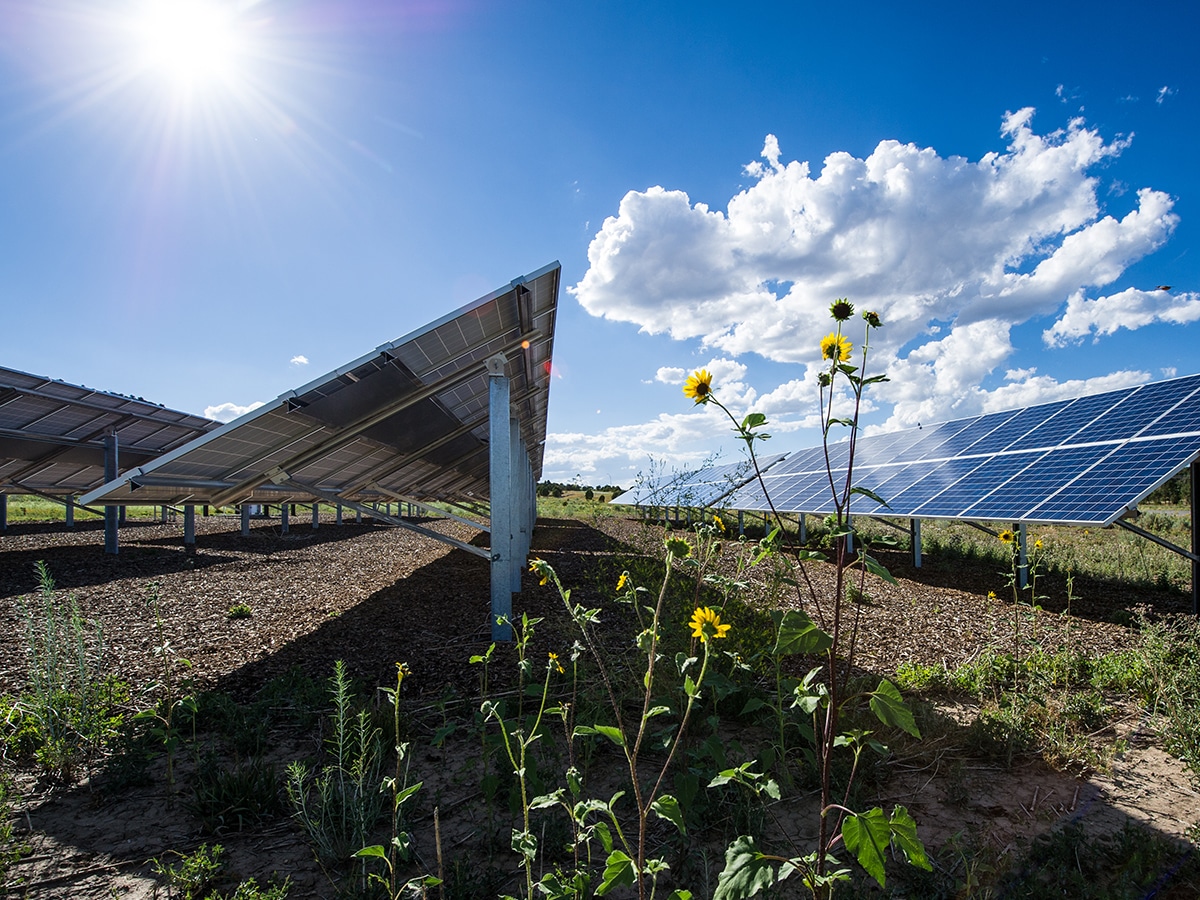Posted on November 21, 2019 in ASRC News, Environmental Sciences Initiative, Featured News
A new university/national laboratory study reveals the importance of factoring climate-water impacts into electric grid planning
- Researchers created a new modeling approach that accounts for climate and water impacts on electricity infrastructure development.
- The new analysis compares results with traditional modeling approaches that may or may not consider climate impacts, revealing that the U.S. power grid may need more capacity than previously thought to adapt to future climate-water conditions.
- Adaptations include additional renewable and natural gas construction and, along with regional electricity generation trade-offs, lead to lower water use and carbon emissions, potentially helping mitigate climate change
NEW YORK, November 21, 2019 — A new analysis from university-based and national laboratory researchers applied a new modeling approach for long-term electricity generation infrastructure planning that considers future climate and water resource conditions. Compared to traditional projections, which do not consider climate-water impacts on electricity generation, results of this new approach show the national power grid may need an additional 5.3% to 12% of power-generating capacity to meet demand and reliability requirements. The changes would lower water use and carbon emissions, potentially helping mitigate future climate changes.
The new study, which will be featured as the cover article in the December 3 online and December 13 print issue of Environmental Science & Technology, is available online today.
“This is the first time anyone has modeled future electricity infrastructure under climate change using a method that includes feasibility checks to ensure results meet reliable power supply thresholds under climate and water resource constraints,” said the study’s lead author Ariel Miara, a senior research associate with the Advanced Science Research Center at The Graduate Center, CUNY (CUNY ASRC) and an energy, water, and environment researcher with the U.S. Department of Energy’s National Renewable Energy Laboratory (NREL). “We combined high-resolution hydrological, thermal-power plant, and capacity-expansion models to improve confidence in long-term electricity infrastructure planning under future climate-water impacts. Typically, this isn’t done for electricity infrastructure planning, or it’s done but without feasibility checks on results. Our approach allowed us to assess region-specific climate-water impacts on power supply reliability and identify potential adaptation steps to enhance reliability.”

The current U.S. grid relies heavily on thermal power plants that use coal, nuclear, and natural gas fuels; these are affected by warm ambient temperatures and need large amounts of water for cooling purposes. Renewable energy sources such as solar PV and wind require minimal amounts of water for operation as they do not require cooling, but these technologies play a much smaller role in generating energy across today’s power grid. Regional differences in power grid configuration and development to year 2050, together with changes in climate and water availability, suggest that some regions may face power-reliability challenges.
With their study, researchers posed four questions:
- How will future climate and water resource conditions impact four electricity infrastructure scenarios?
- How will their new method of modeling climate-water impacts on electricity-generation compare to previous efforts?
- What types of technology choices would be needed to adapt to future climate-water conditions and meet reliable electricity-generation levels?
- What are the resulting economic and environmental implications?
To answer these questions, the research team first simulated capacity-expansion scenarios for four electricity mixes favoring different technology types (coal, nuclear, solar, and business as usual) without considering climate-water impacts. These projections to year 2050 provided a baseline understanding of results using current capacity-expansion approaches. For their next step, researchers factored in climate-water impacts on each electricity mix. This approach allowed them to assess its effect on different types of systems and elucidate potential adaptation steps required for each to meet energy demands. Their analysis found that capacity reserve margins drop below certain reliability levels when capacity projections didn’t account for climate-water impacts, or when they try to but don’t include feasibility checks.
“We showed that power systems may face reliability challenges without climate-water adaptation,” said Miara. “Viable solutions included tradeoffs in regional technology choice and typically more renewable-based versus thermal power generation. This results in lower overall water use and emissions for our electricity generation needs.”
“This analysis is the capstone to a long series of studies that this research team has produced to analyze unique climate-water-environment interactions in the context of long-term energy planning under climate change,” said Charles Vörösmarty, a co-author of the study and director of the CUNY ASRC Environmental Sciences Initiative. “The study provides valuable information and an initial roadmap for scientists, infrastructure planners, power companies, and communities to have informed conversations about how we plan future systems.”
This research was a collaborative effort with NREL and Sandia National Laboratories. The study was funded under National Science Foundation’s Water Sustainability and Climate Program (Principal Investigator: Charles Vörösmarty).
###
About the Advanced Science Research Center
The Advanced Science Research Center at The Graduate Center, CUNY (CUNY, ASRC) is a world-leading center of scientific excellence, which elevates scientific research and education at CUNY and beyond through initiatives in five distinctive, but broadly interconnected disciplines: nanoscience, photonics, neuroscience, structural biology, and environmental sciences. The ASRC promotes a collaborative, interdisciplinary research culture where renowned scientists advance their discoveries using state-of-the-art equipment and cutting-edge core facilities.
About The Graduate Center of The City University of New York
The Graduate Center, CUNY is a leader in public graduate education devoted to enhancing the public good through pioneering research, serious learning, and reasoned debate. The Graduate Center offers ambitious students more than 40 doctoral and master’s programs of the highest caliber, taught by top faculty from throughout CUNY — the nation’s largest public urban university. Through its nearly 40 centers, institutes, initiatives, and the Advanced Science Research Center, The Graduate Center influences public policy and discourse and shapes innovation. The Graduate Center’s extensive public programs make it a home for culture and conversation.
